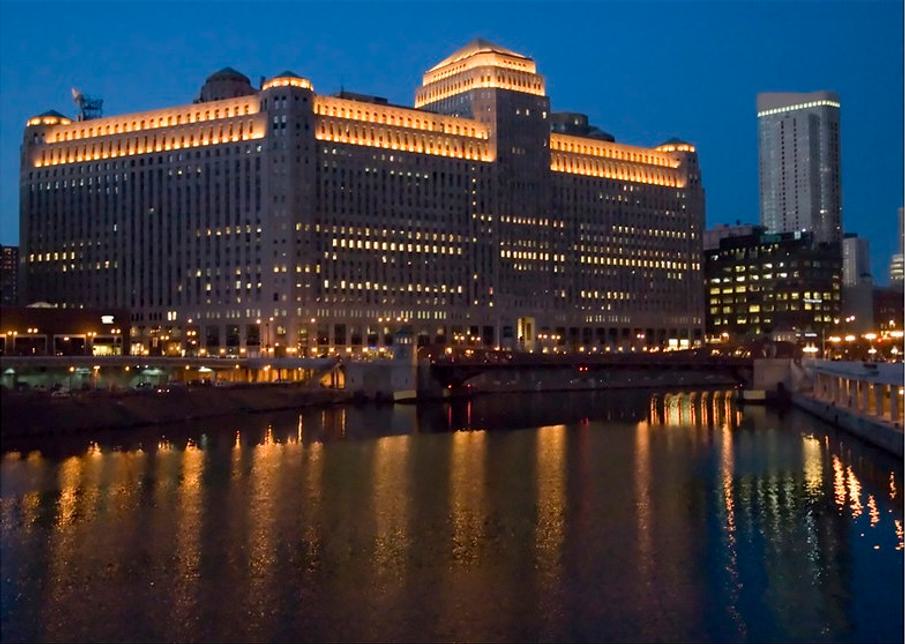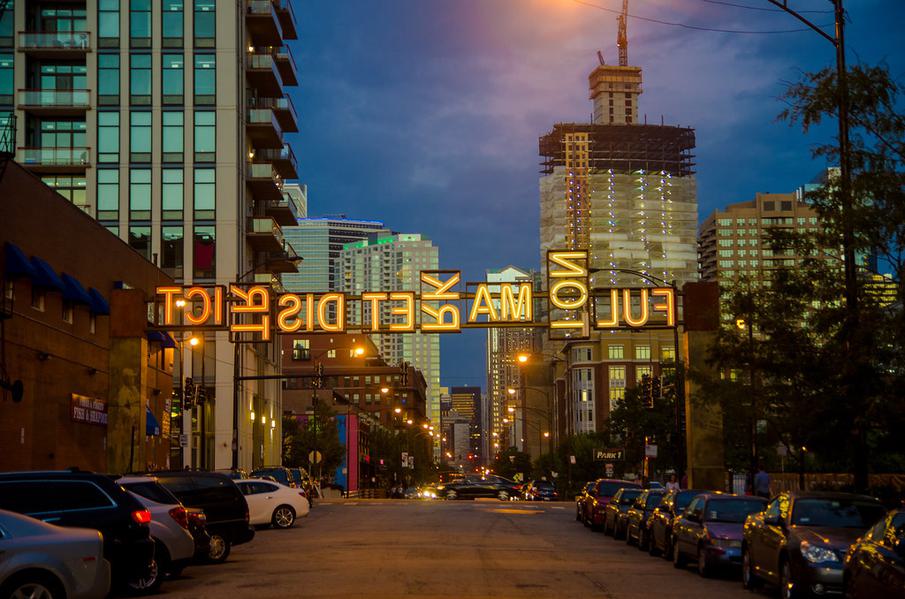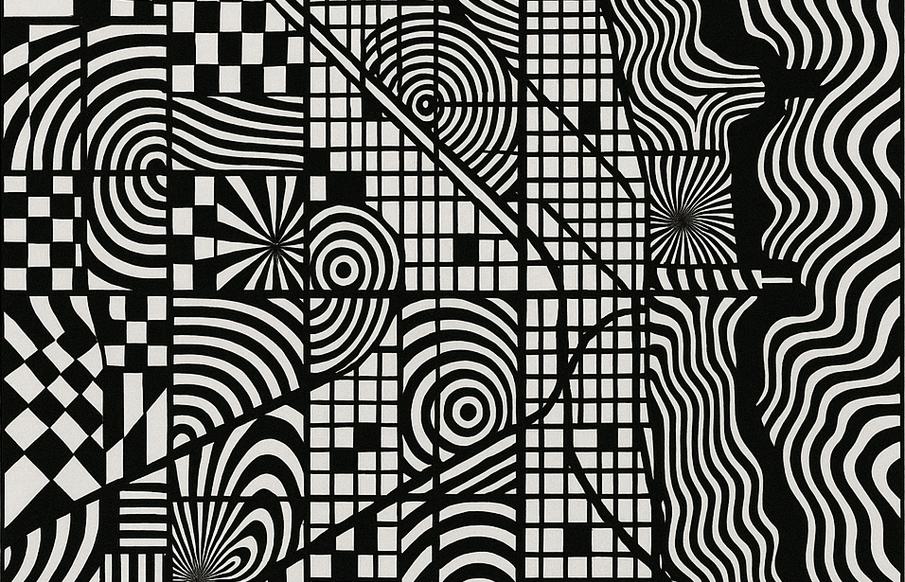
Peopledesign
The Built Environment
Furniture
Lighting
Textiles/Upholstery
Flooring/Carpet
Building Materials
AE Firms
Adopting an Industry Narrative
Adopting an Industry Narrative
The commercial interiors industry should speak with one voice.
It’s June in Chicago, which means it’s time for NeoCon – or, if you prefer, Design Days.
For decades, the global trade show NeoCon (the National Exposition of Contract Interior Furnishings) has been a centerpiece for the market, a milestone on the calendar, and a way to take measures of the industry. The flight of companies from Merchandise Mart to Fulton Market has created an identity crisis for the commercial interiors industry. There are good reasons why this has happened, and a mature industry needs to pivot, but it will benefit everyone if we get our story straight.

Chicago Merchandise Mart (Flickr)
For 50 years, the event was held in the storied Merchandise Mart in Chicago. Constructed in 1930 by Marshall Field & Co. as a wholesale center, the building was once the largest in the world by floor space. The hulking building boasts 3.7 million square feet, spans two city blocks, and rises 25 stories.
Over the years, hundreds of companies have used the Mart location as both the venue for the show and a permanent showroom. NeoCon served as a critical event for commercial design companies. Having a “storefront” in the Mart meant you would be taken seriously as an industry competitor. Companies stretched themselves to accept long-term leases and jockeyed for position on popular floors.
The industry's growth through the 1970s and 1980s was on full display at the Mart, from extravagant showrooms to lively cocktail parties. The day before NeoCon, marketing teams covered showrooms with craft paper while people put the finishing touches on all night, preparing the space for the big reveal. Cameras weren’t allowed during the show for fear of corporate espionage, and competitors couldn’t enter each other's showrooms until the last day. It became the de facto Midwest go-to location for customers, designers, and industry insiders.
But the building wasn’t made for showrooms or trade shows. Construction in the Mart could be a hassle, from parking to moving equipment in and out. The ceilings were a fixed height, and the long hallways could be maze-like. Slow, crowded elevators became a regular part of the NeoCon experience, much maligned but jokingly accepted. For many companies, a showroom in the Mart could be difficult and expensive – but also a requirement to stay competitive.
A few companies took the step of moving just outside the Mart. DIRTT, Interface, Kimball (now part of HNI), and Trendway (now part of Fellowes) created showrooms across the street from the Mart; a decidedly bold move some might consider risky. It’s just outside, but will people remember to leave the building? These companies may have seen somewhat lighter foot traffic than those in the furniture mall during NeoCon, but it may have been cheaper and easier. The other 362 days of the year, the showroom would be more accessible and visible to the public with exterior signage.

Fulton Market District (Flickr)
A watershed moment occurred when the industry leader Knoll exited the Mart in 2018. Not only did they leave the building, but Knoll relocated to an entirely different neighborhood. The much trendier Fulton Market District has more restaurants, space, and a younger vibe. Three years later, Herman Miller, with an increased focus on retail and its acquisition of Knoll to become MillerKnoll, also moved to Fulton Market. Herman Miller had been a resident of the Merchandise Mart for 80 years.
These moves created a shockwave in the industry. The newly combined MillerKnoll became the largest player in the industry, but could they do it alone? Do they not need NeoCon? Many leaders asked themselves the same question, and eventually, many followed. This year, 60 companies are exhibiting in the Fulton Market neighborhood. These ex-Mart exhibitors have organized their event, Design Days. It happens in parallel with NeoCon and a mile from the Merchandise Mart.
Why couldn’t Fulton Market also be a NeoCon event? It’s likely because the Mart owns the NeoCon brand, and a real estate company owns the Mart. NeoCon is less of an event business than a building with showrooms that hold events. If the events were outside the building, they couldn’t be NeoCon. Everyone calls it NeoCon nonetheless. Everyone has called it NeoCon for their entire working lives. Now we have two names: NeoCon and Design Days.
Design Days at Fulton Market is different from NeoCon at the Mart. The maze-like hallways and slow elevators are gone, but so is guaranteed foot traffic. It’s easy to find yourself on the street asking: Where is that building? What floor are they on? What showrooms did I miss? And the weather becomes an issue. You get to see the sun, but you’re not sheltered from the elements. Excessive heat or rain can affect turnout.
The Mart has seen more showroom shuffling than ever before. All the vacancies have created places for new competitors who had previously struggled for attention. In some ways, the Mart has new energy with fresh brands and showrooms, looking to thrive in a new way. NeoCon has been pushed to become more innovative in the wake of change.
Each event has merit. However, if we look at this from a brand or customer experience perspective, it’s easy to see that these two events should be one. Unless you are distinctly aligned with one of the manufacturers, you see it as one event anyway – likely, NeoCon in two parts. Getting from one place to the other is problematic, but at least we’d know what to call it. If the events were coordinated, there would be more integrated programming, transportation, and greater cohesion.
Attendees are left with both NeoCon and Design Days. We aren’t sure what to call it. Individual manufacturer brands may feel like it’s not their problem, but it is an industry problem. Having a central place for the industry to aggregate makes sense.
During the pandemic, many were forced to work from home. WFH concepts are not new to this industry, and it’s disappointing that key industry players weren’t the first ones news organizations and thought leaders called upon for advice. A cohesive industry narrative lifts all boats.

Time for Chicago Design Week?
Fulton Market became a destination because the industry had needs that the Mart (the building) couldn’t address. Still, NeoCon's story (as a powerful industry show) is worth keeping or extending. Ultimately, the companies that moved to Fulton Market decided that the showroom was more important than the show. However, a clear industry narrative helps others understand our value.
NeoCon is the historical name, but it isn’t a great one. Its meaning isn’t self-evident, and in recent decades, it can get confused with a political meaning (neoconservatives are sometimes called “neocons”). Design Days may be a more descriptive name, but it’s forging new territory. Some, including the City of Chicago and IIDA, have suggested a third: Chicago Design Week. One way or the other, the industry should adopt a single name for the annual Chicago events in June.
Commercial design is a mature industry ripe for change. Many companies aren’t seeing growth as in decades past because we’ve started the next chapter of supporting the built environment. As we embark on this next era, let’s have a cohesive message for ourselves, our suppliers, partners, customers, specifiers, and the general public.
It’s stronger to speak with one voice.


